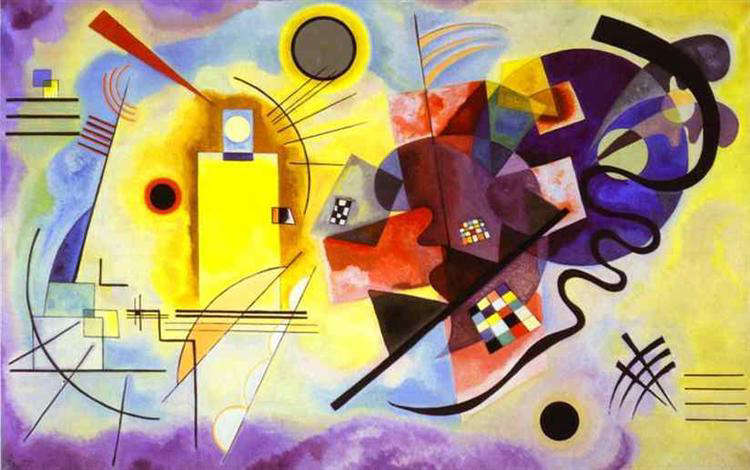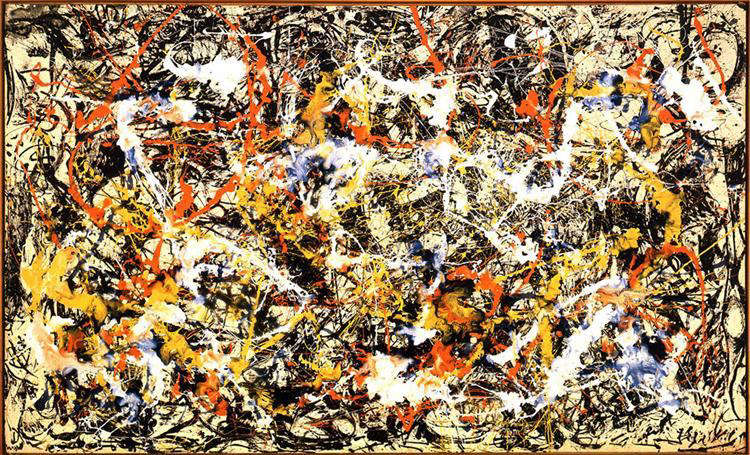Understanding abstract art is easy: all it requires is an open mind and big imagination.
-Thaneeya McArdle
Modern abstract art seemingly segregates the audience into two categories. Category one; people who think it’s genius. Category two; people who think it’s overrated. But then there’s category one and half (I believe); people like me, who feel they just don’t know enough about it to form an opinion yet. If you identify yourself with me, you’re in the right place.
This blog does not give you all that there is to know about abstract art. No single blog can do that. I am not an abstract artist or a professional in the field. I am just an amateur art enthusiast. And on my journey to learn and explore art, I’ve tried to lay out in this blog, all that is needed to embrace abstract art and hopefully find the right attitude to appreciate it.
Starting with some history.
Prior to the 1800s, art was primarily for the rich and was notably inaccessible. It was mostly commissioned portraits or landscape paintings.
Dawn of the 20th century saw movements like fauvism, cubism and surrealism, pushing art towards abstraction. Other factors such as two world wars and industrialization played a significant role too. Wassily Kandinsky, considered to be the first true abstract artist, further developed the theory of abstraction through expressionism during this period.
 Yellow - Red - Blue, 1925 by Wassily Kandinsky
Yellow - Red - Blue, 1925 by Wassily Kandinsky
Eventually, traditional art seemed under equipped to represent the modern world. Artists started experimenting with the fundamental elements of art to depict things that were more subjective like moods and emotions. As the years progressed artists became less and less obligated to depict things as they were. So we ultimately arrived at art that does not make even the slightest reference to the real world around us.
What it is not?
Abstract art is not what you would expect it to be. It’s not easy to understand because there is no straightforward right or wrong answer. It does not depict anything tangible or easily recognisable. But that is exactly one of the many beautiful things about it! It is open to interpretation. The strength of abstract art lies in its ambiguity.
 Convergence, 1952 by Jackson Pollock
Convergence, 1952 by Jackson Pollock
“If deceiving the eye were the only business of the art... the minute painter would be more apt to succeed. But it is not the eye, it is the mind which the painter of genius desires to address.”
― Sir Joshua Reynolds
Abstract has emerged from the idea that formal qualities are more important than the subject matter they are used to depict. It is the pleasing arrangement of colors that is needed for aesthetic satisfaction and not the recognition of the subject itself. Then why not get rid of the subject altogether?
What is it then?
“Energy and motion made visible – memories arrested in space”
― Jackson Pollock

Black Square, 1915 by Kazimir Malevich
Practically, abstract art can be about anything or even nothing at all. It can be based on something the artist has observed or an idea they had. But it doesn’t have to look like it. Some abstract artists theorise on the emotions that are caused by certain colors and shapes. They plan out their seemingly random paintings to the very last detail. Others paint with emotion and randomness hoping to capture their sentiments and subconscious thoughts on the canvas.
In its purest form, Abstract Art has no subject. It’s about composition, texture, colour, line form and gesture.
The right attitude.
So, how to make sense of it all?
In theory, abstract art can be understood by everyone. It does not rely on insider information from the art world to understand it. Then why is it seen as elitist today? Why do we distance ourselves from it?
Because most of us have been looking at it the wrong way and asking ourselves the wrong questions. We’ve been busy trying to figure out what it looks like and why it is so expensive.
What the artist intended it to look like is not at all relevant. The elements, colors and textures in the painting are. Give yourself the freedom to explore the artwork and assign your own meaning to the piece. Allow yourself enough time to build a connection with the painting. How does the title of the painting influence what you see? How does the painting make you feel? Does it make you joyous or sorrowful or maybe you’re just indifferent to it. Stop. Take the time to find out why it makes you feel that way. You might end up discovering something about yourself in the process.
